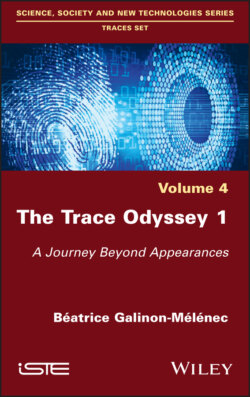Читать книгу The Trace Odyssey 1 - Beatrice Galinon-Melenec - Страница 20
I.13. The corps-trace at the heart of the relationship between the individual and the “milieu”
ОглавлениеTo put forward the bodily dimension of a human being, as an inescapable deterrent to any anthropocentric interpretation, is to consider humans as not being pure spirits, but to recognize that their rationality, however powerful it may be, cannot ignore their senses, emotions, cultural and social components.
It is also to be noted that:
– on one hand, the presence of a body in an milieu leaves traces;
– on the other hand, the milieu produces effects – traces – on and in the body.
These continuous interactions build a “corps-trace” specific to each human.
Figure I.4. An individualized perception of reality that takes into account many factors, including sensoriality, affective reality and emotion (Galinon-Mélénec 2008)
REMARKS PERTAINING TO FIGURE I.4. – In this figure we can observe:
– on the left:- the body’s senses are located as channels of perception and transmission between a body and a constantly changing medium/milieu/environment;
– in the center:- above the figure, we see that the body/milieu/environment factors are, of course, the senses but also the affective and cognitive dimensions that are immediately activated upon contact (biologically and cognitivo-emotionally);- below the figure, we see the conséquences-traces of these interactions in that they construct the point of view that each human construes reality;
– on the right:- language is perceived as a “common” feature, socially constructed to serve as a bridge between the representations that an individual construes of reality. Humans express themselves verbally from this “common” feature, whose logical syntax has been acquired/learned. When bodies are in co-presence, they activate traces incorporated in each individual from their previous experience;- at the moment of the encounter, humans are in a specific context whose different dimensions interfere with the possibility or impossibility of exteriorizing incarnated traces. Hence, the idea that there are moments, situations and humans, and non-humans, and their moments and situations (Goffman 1988)44;- the resulting relationship is the conséquence-trace of the opening or closing with respect to the behavioral signes-traces emitted by each one;- the relationship that emerges from the interaction of the embodied traces is complex by nature. Verbal language, which is a common reducer of complexity, cannot account for all aspects of complexity. An observation that Michel de Montaigne summed up is as follows: “If I am urged to say why I loved her, I feel that this can only be expressed by answering “Because it was her; because it was me” (Montaigne 1989, chapter 28 (1580, 1595), author’s translation).
NOTE.– As is to be discussed in greater detail later in the book, it is the “corps-trace” to “corps-trace” interaction (Galinon-Mélénec 2017) that establishes the nature of the interpersonal relationship, itself being: (a) at the basis of the greater or lesser reception of the content of the syntactically constructed message; and (b) considered as a system of signes-traces whose property is to evolve continuously because it puts living beings in relation with each other, subject to permanent human-milieu exchanges.
